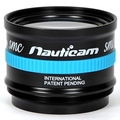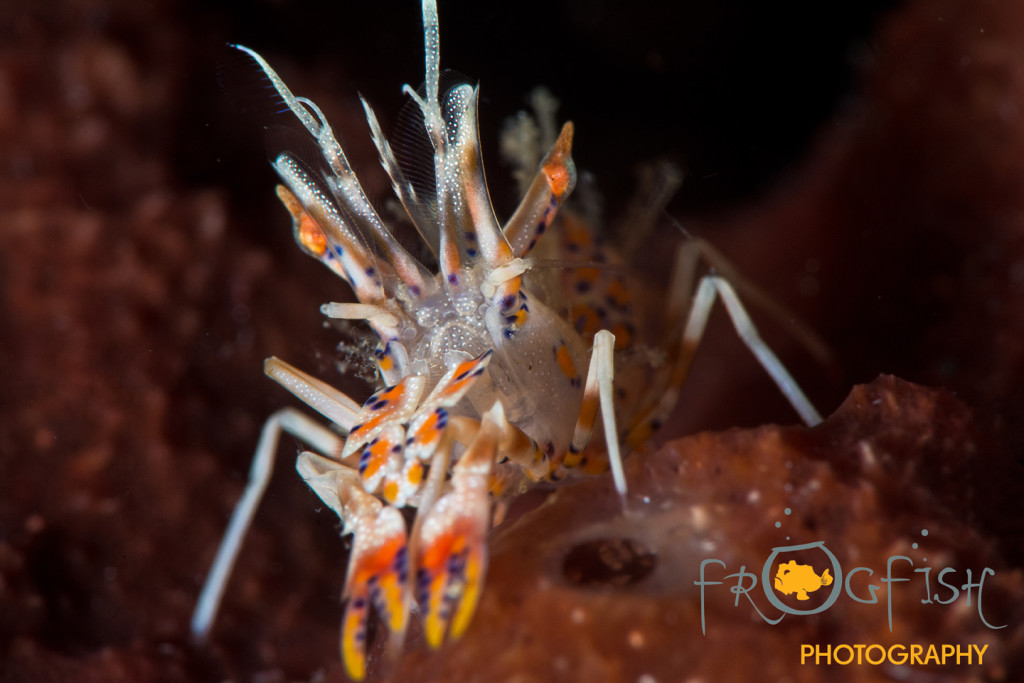News
S.U.P.E.R. Part 7: Nauticam SMC

In our ongoing series S.U.P.E.R. (Scubaverse’s Underwater Photography Equipment Reviews), Nick and Caroline Robertson Brown from Frogfish Photography review new underwater photography equipment, general diving equipment, and some older favourites too.
For the seventh instalment of S.U.P.E.R., Nick and Caroline take a look at Nauticam’s Super Macro Converter (SMC).
Nauticam SMC – OMG
 The Nauticam Super Macro Converter (SMC) is a wet lens designed to fit on the outside of your camera housing to give magnification to macro marine life (or anything else you wish to shoot). It has a 67mm screw thread and is compatible with a wide range of cameras and lenses. It is the first lens of this type that has been completely designed from scratch for use underwater, and this is evident when you use it – it offers huge magnification, and yet still the images are crisp and sharp. I used the lens with my Nikon D7100, Nauticam housing, 105mm lens and a flip dioptre that allows you to easily move from macro to super macro without having to unscrew the lens from the port.
The Nauticam Super Macro Converter (SMC) is a wet lens designed to fit on the outside of your camera housing to give magnification to macro marine life (or anything else you wish to shoot). It has a 67mm screw thread and is compatible with a wide range of cameras and lenses. It is the first lens of this type that has been completely designed from scratch for use underwater, and this is evident when you use it – it offers huge magnification, and yet still the images are crisp and sharp. I used the lens with my Nikon D7100, Nauticam housing, 105mm lens and a flip dioptre that allows you to easily move from macro to super macro without having to unscrew the lens from the port.
My first impression – WOW. In Indonesia, sometimes the guides can point out creatures that are so small, my eyes struggle to even see what they are pointing at. But with the SMC, I could take photos of these critters. You do need good diving skills to get the best from this lens, as you are required to be quite close to the subject and perfectly still to focus and take the shot. In currents and surge, while keeping your fins off any delicate coral or marine life, you need to be patient to capture the image you want. Indeed, as I mostly shoot in wide-angle, this lens took a bit of getting used to. Suddenly you look down your viewfinder and the world is hugely magnified, and it takes time to be able to locate the subject, get close enough to focus and get into a suitable position to take a shot, before said critter gets bored and wanders off. But it is worth the effort, as new macro subjects suddenly became possible, and previously boring shots of small subjects that were lost in the frame will now pop out in their full glory.
I also enjoyed the chance to experiment with the lens to pick out the intricate details of larger subjects; for example, focusing on the details of an eye. On our recent trip to Manado in Indonesia, I was able to fill the screen with tiny creatures like pigmy seahorses, minute colourful shrimps and the details that make up the incredible camouflage on the many frogfish our guides found for us (none of the images in this review have been cropped). I would use the 105mm lens without the SMC first for some of the larger subjects, getting a more conventional shot to start with, and then using the flip dioptre holder, I could move the SMC lens down into position, ease forward towards the subject, and get some amazing detail shots too.
The quality does come at a price, with the desirable, but not necessarily essential, flip dioptre holder coming in at £159.95 and the SMC itself costing £399.95. However, I would not want to be without either when I am next getting into the water to have some macro photography fun.
For those that love macro photography, this is a superlative accessory. There is also something about using this lens that is addictive (maybe it should come with some sort of warning). There are plenty of acronyms within the underwater photography world. In this case perhaps they should change the name of the lens from SMC to OMG!
For more information about the SMC from Nauticam visit www.nauticam.co.uk/nauticam-super-macro-convertor.
To find out more about Nick and Caroline and Frogfish Photography, visit www.frogfishphotography.com.
Gear News
Introducing the TR-80, IR-50 and CS-30 Regulators from DYNAMICNORD

Whether you are a beginner or a professional diver – with the three new main regulators from DYNAMICNORD, everyone will find their favourite regulator. They all look super stylish.
Excellent performance with the TR-80
Quality and performance are the be-all and end-all for regulators. It is not for nothing that the TR stands for Tec Reg. The innovative design of the TR-80 guarantees absolute reliability – even in ice-cold waters.

Perfect breathing effort at 0.8 J/l / certified for diving in waters below 10 degrees / structural design made of solid brass for best cold protection / membrane-compensated design with dry seal of the first stage / reduced exhalation effort thanks to optimized exhalation membrane and bubble deflector / adjustable Venturi (dive/predive) and adjustment knob for individual inhalation comfort / innovative design of the front cover prevents free-flow in strong currents or when diving with scooters / design made of sandblasted brass, matt chrome finish / 2 HP and 4 LP outlets / mouthpiece made of high-quality, anti-allergic silicone for maximum comfort.


Amazing underwater adventures with the IR-50
The IR-50 is the top regulator for advanced and experienced divers. Natural breathing is the essence of this regulator.

Ideal breathing effort at 0.8 J/l /certified for diving in waters below 10 degrees / compensated membrane / adjustable venturi (dive/predive) and adjustment knob for individual inhalation comfort/ outlet valve and deflector for minimum exhalation effort and reduction of bubbles on the face / design made of sandblasted brass, matt chrome finish / 2 HP and 4 NP outlets / mouthpiece made of high-quality, anti-allergic silicone for maximum comfort.


The Workhorse – our CS-30
For diving centres and diving beginners – the workhorse stands for strong construction, reliability and robustness. Perfect for your training.

Optimal breathing effort at 0.8 J/l /recommended for diving in waters above 10 degrees / non-compensated piston / adjustable venturi (dive/predive) / outlet valve and deflector for minimum exhalation effort and reduction of bubbles on the face / design made of sandblasted brass, matt chrome finish / 1 HP and 3 NP outlets / mouthpiece made of high-quality, anti-allergic silicone for maximum comfort.


Octopus OP-30
The OP-30 is the ideal addition to all DYNAMICNORD regulators. It is identical in construction to the CS-30.

The TR-80, IR-50, CS-30 (DIN & INT) regulators and the Octopus OP-30 are available from DYNAMICNORD dealers and in the online store.
DYNAMICNORD – Your Outdoor Companion.
Marine Life & Conservation
Paul Watson Released as Denmark Blocks Japan’s Extradition Bid

Renowned anti-whaling activist Paul Watson has been released from custody in Greenland after spending five months in detention. Denmark’s Justice Ministry rejected Japan’s request for his extradition, citing insufficient guarantees that his time already served in custody would be credited against any potential sentence.
The 74-year-old Canadian-American was arrested on July 21 in Nuuk, Greenland’s capital, when his ship docked to refuel. His arrest was based on a 2012 Japanese warrant related to a 2010 encounter in Antarctic waters. Japan alleged Watson obstructed operations and caused damage to a whaling research ship during efforts to disrupt illegal whaling. Watson has consistently denied these claims, maintaining his commitment to marine conservation.
Denmark, which oversees extradition matters for Greenland, concluded that while the legal conditions for extradition were met, the lack of assurances from Japan regarding time-served credit made extradition untenable.
In a video shared by his foundation, Watson expressed gratitude and relief, saying, “After five months, it’s good to be out… and good to know they’re not sending me to Japan.” He added that the most difficult part of his time in custody was being separated from his two young sons.
Watson is a pioneering figure in marine conservation, known for founding the Captain Paul Watson Foundation in 2022 after decades of activism with the Sea Shepherd Conservation Society. His bold efforts to defend marine life have earned him widespread support, including from celebrities and conservationists. His work has also been featured in the acclaimed reality TV series Whale Wars.
Watson’s lawyer, Jonas Christoffersen, praised the decision, stating, “We are happy and relieved that Paul Watson is now free.” He added that Watson is eager to reunite with his family and continue his vital work.
The arrest occurred while Watson’s vessel, the M/Y John Paul DeJoria, was en route to the North Pacific with a team of 26 volunteers to intercept a Japanese whaling ship. His foundation described the arrest as politically motivated and emphasized that Watson’s actions were focused on ending illegal whaling practices.
Japan resumed commercial whaling in 2019 after leaving the International Whaling Commission, asserting that whale meat is a cultural tradition. Conservationists, however, continue to challenge these practices, highlighting their impact on marine ecosystems.
Despite the challenges, Watson remains steadfast in his mission to protect marine life and bring attention to whaling practices. His dedication to ocean conservation has made him a globally respected advocate for the environment.
-

 News2 months ago
News2 months agoIconic SS United States to become the World’s Largest Artificial Reef
-

 News3 months ago
News3 months agoBook Review – 52 Assignments: Underwater Photography
-

 Gear News3 months ago
Gear News3 months agoDYNAMICNORD – New German diving brand enters the British market
-

 News3 months ago
News3 months agoExploring Cenote El Pit: A Diver’s Dream
-

 Gear News3 months ago
Gear News3 months agoTry BARE drysuits (and maybe even win one!) this Friday with Sea & Sea at North West Dive Fest
-

 Marine Life & Conservation3 months ago
Marine Life & Conservation3 months agoBook Review: Coral Triangle Cameos
-

 Blogs2 months ago
Blogs2 months agoDive the Egyptian Red Sea this Autumn with Regaldive
-

 News3 months ago
News3 months ago2024 Ocean Art Underwater Photo Competition Announced



















